Today we had a spring workshop at our clubs local division. A few brave individuals were there to work on their own trees. I brought two trees with a similar agenda, a large japanese maple, and a dwarf variety of hornbeam. The goal for today was to make ground layers on both, and to make an airlayer also on the maple.
I started with the hornbeam, its a grafted tree with an ugly rootbase. The graft is fairly visible but makes the trunk bulge out slightly. I plan to use this bulging to make the new nebari better
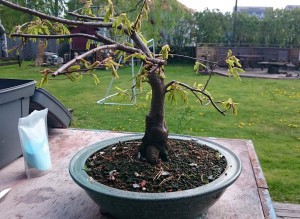
As you can see, this is a material tree. And the bulging is clearly visible on this picture. It will never be beautiful if left as it is.
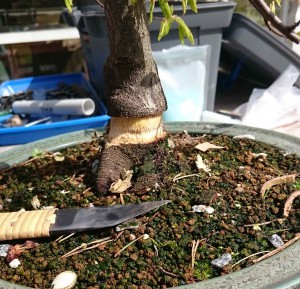
The cut is made with a sharp knife. I use a grafting knife and make sure that the upper edge is made with a clear cut. Rooting hormone with IBA is used and the cambium layer is carefully removed to prevent it from callousing over.
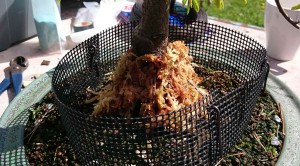
Spaghnum moss is applied on the layer and a mesh barrier is placed around it. After that it´s filled with my normal decidous mix, two parts akadama, one part burned clay and one part grit.
On the maple, two layers were made. One was a ground layer described above, the other was an airlayer on the top part. Originally, this was a garden tree with a straight section, but there was some movement on the upper area. After discussion with the others, a decision was made on where to put the layer.
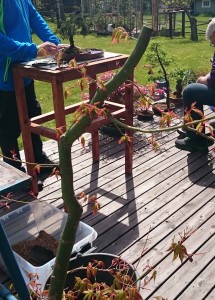
After i marked the area where the new nebari for the upper part would be, the bark was removed. The section removed was about 2 times the diameter of the trunk. I also cut away the cambium and some sapwood with a concave cutter.
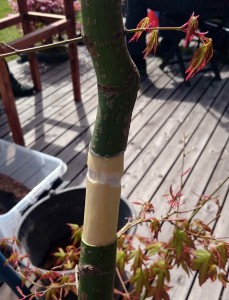
The upper part was again dusted with rooting hormone and moist spaghnum moss was applied around it. A clear plastic bag was used to hold the moss in place and to prevent it from drying out. The last images shows the finished layers. As a precaution to keep the soil from drying out too fast, moss was applied as a top dressing also.
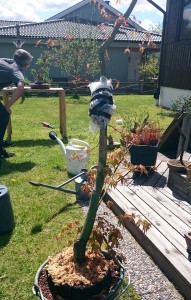
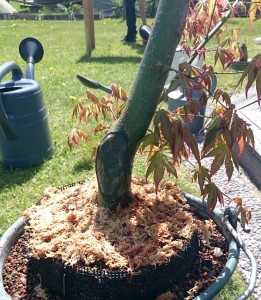
The only thing remaining now, is to watch it grow. Hopefully i can seperate the upper layer in late summer or early fall. The ground layers will be seperated next spring at repotting.